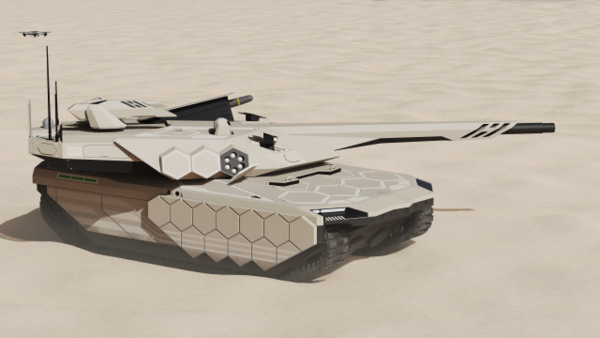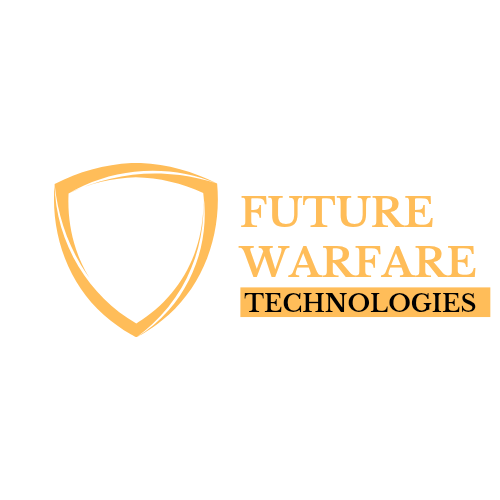South Korea is forging a path toward the future of military technology with the development of the Hydrogen-Powered K3 Main Battle Tank, an ambitious project led by Hyundai Rotem, a prominent defense contractor.
This next-generation tank, slated for completion by 2040, promises to redefine armored warfare through a blend of stealth, advanced firepower, and innovative propulsion systems. As Hyundai Rotem accelerates its efforts to secure long-term growth in the defense sector, the K3 emerges as a bold successor to the K2 Black Panther, South Korea’s current main battle tank, which has already earned a reputation for excellence on the global stage.
The K3’s development is a collaborative endeavor, bringing together Hyundai Rotem, the Agency for Defense Development (ADD), and the Defense Agency for Technology and Quality. This partnership ensures that the tank incorporates the latest advancements in military research and engineering.

The concept for the K3 was unveiled to the world at the Seoul International Aerospace and Defense Exhibition (ADEX 2023) in November 2023, offering a glimpse into a tank designed not just for today’s conflicts but for the battlefields of tomorrow. With a focus on stealth, mobility, and protection, the K3 is poised to meet the evolving demands of modern warfare. Stealth is a cornerstone of the K3’s design, reflecting the growing importance of remaining undetected in an era dominated by radar and electronic surveillance.
The tank features enhanced radar absorption capabilities, allowing it to evade enemy detection systems more effectively. Its exterior is crafted with a low-profile structure, minimizing turret protrusions to make it harder to spot and target. This stealth functionality is paired with improved mobility, achieved by optimizing the tank’s weight and shape to navigate diverse terrains with agility. Such adaptability is vital for rapid deployment and tactical flexibility, key factors in determining the outcome of future conflicts.
The K3’s versatility extends beyond its core design, as it integrates multi-purpose reconnaissance drones into its operations. An armored cover attached to the rear of the turret serves as a launch and recovery platform for these drones, enabling the tank to gather real-time intelligence and extend its situational awareness. This fusion of manned and unmanned systems represents a forward-thinking approach to warfare, where drones are becoming indispensable tools for reconnaissance and combat support.
Inside the K3, the crew’s experience has been carefully considered to maximize efficiency and safety. The tank’s interior is designed to accommodate three crew members comfortably, adhering to European body size standards to ensure ample space within the confined environment. A capsule-type crew compartment provides an additional layer of protection, shielding personnel from external impacts and enhancing their survivability in combat. The inclusion of 360-degree virtual reality technology further elevates the crew’s capabilities, allowing them to monitor their surroundings through large displays without exposing themselves by opening the hatch.
This blend of comfort and security ensures that the crew can operate effectively during extended missions. When it comes to firepower, the K3 is equipped to dominate the battlefield. Its unmanned turret houses a 130mm large-caliber smoothbore gun, paired with an automatic loading system that enables rapid and precise engagement of targets. This represents a step up from the 120mm cannons found on many contemporary tanks, offering greater range and penetration power.
The tank’s offensive capabilities are enhanced by an AI-based fire control system, which improves its ability to identify and strike targets preemptively. A drone jamming device adds another dimension to its arsenal, allowing the K3 to disrupt enemy unmanned systems and maintain battlefield control. Survivability is equally critical, and the K3 incorporates a composite armor system made from advanced materials, including ceramic modules. This armor is both lighter and more effective than traditional steel, providing robust protection without compromising the tank’s mobility. The addition of an active protection system (APS) and drone jammers bolsters its defenses, offering countermeasures against anti-tank weapons and aerial threats.
Together, these features make the K3 a resilient and adaptable platform, capable of withstanding the diverse challenges of modern combat. The most groundbreaking aspect of the K3 lies in its propulsion system. Hyundai Rotem aims to equip the tank with hydrogen fuel cells by 2040, a move that could transform military vehicle design. Hydrogen fuel cells promise greater energy efficiency, extended range, and reduced noise compared to conventional diesel engines.
These advantages are particularly valuable in a military context, where stealth and endurance can tip the scales in a mission’s success. The large-capacity electrification enabled by hydrogen power will also support the tank’s advanced systems and sensors, reducing reliance on external power sources and enhancing its operational independence. The low-noise performance of hydrogen fuel cells further complements the K3’s stealth capabilities, making it a quieter and less detectable presence on the battlefield. Recognizing the complexity of this transition, Hyundai Rotem is adopting a phased approach.
The company plans to first develop a diesel-electric hybrid power pack for the K3, which will be completed earlier than the hydrogen fuel cell system. This hybrid solution will allow the tank to enter service sooner, providing an interim boost to its deployment timeline while the hydrogen technology matures. Once fully realized, the hydrogen-powered K3 will set a new benchmark for tank propulsion, potentially inspiring other nations to explore similar innovations. Beyond the K3’s development, Hyundai Rotem is strengthening its position in the global defense market by expanding its tank maintenance, repair, and overhaul (MRO) business.
This effort is closely tied to its existing contract with Poland, where the company has agreed to supply 180 K2 tanks in a deal valued at 9 trillion won (approximately $6.7 billion). The second phase of this contract includes the transfer of MRO technology to a subsidiary of PGZ, Poland’s state-owned defense company, which will produce K2 tanks locally. This technology transfer has doubled the contract’s value from the initial 4.5 trillion won, reflecting the high demand for after-sales support in the defense industry. Hyundai Rotem has already delivered 133 of the 180 K2 tanks from the first supply contract as of June this year, with plans to complete the remaining 47 by year-end.
To support this effort, the company operates maintenance centers in Gdansk, where K2 tanks are unloaded, and Morąg, where they are deployed. Approximately 20 employees from South Korea are stationed in Poland, providing maintenance, repair services, and training to the Polish military. Once the second contract is finalized, additional personnel will be dispatched to accelerate the MRO technology transfer, enabling Polish companies to eventually assume full responsibility for their tank fleet.
The emphasis on MRO reflects a broader trend in the defense sector, where after-sales services often yield higher profit margins than the initial sale of equipment. By building a robust MRO framework, Hyundai Rotem is not only supporting its international partners but also securing a sustainable revenue stream. Poland’s interest in establishing a self-sufficient value chain, including the development and local production of Polish-type tanks, further underscores the strategic importance of this collaboration. South Korea’s pursuit of the Hydrogen-Powered K3 Main Battle Tank showcases a blend of innovation and pragmatism, driven by Hyundai Rotem’s vision for the future.
With its advanced stealth features, formidable firepower, and revolutionary hydrogen propulsion, the K3 is set to redefine the role of tanks in warfare. At the same time, the company’s expansion into MRO services positions it as a key player in the global defense landscape. As the K3 project progresses toward its 2040 milestone, it stands as a testament to South Korea’s ambition to lead the charge in military technology, offering a glimpse of what the battlefields of tomorrow might hold.
